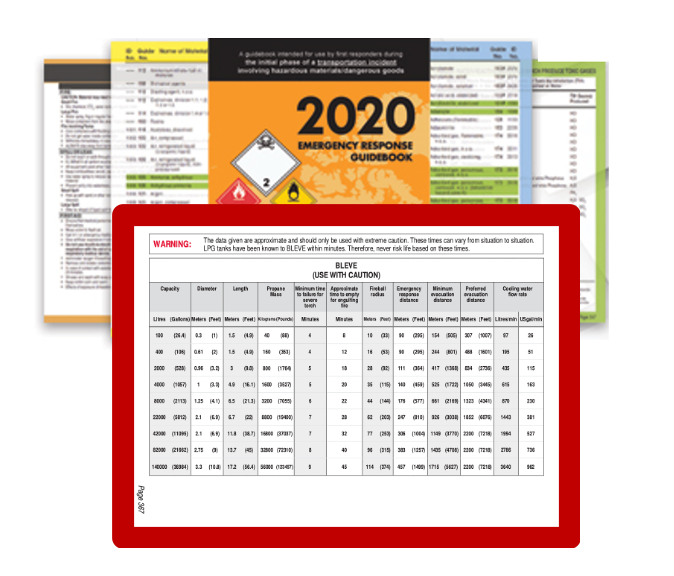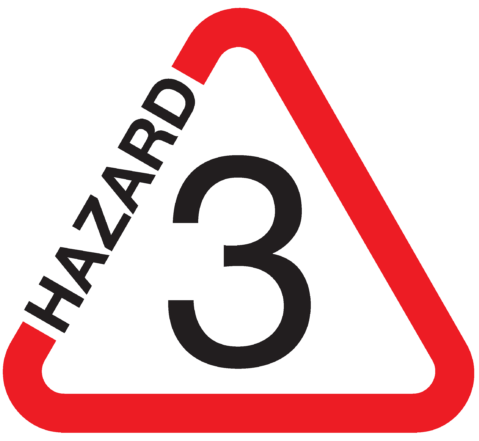By Gary Sharp

The Emergency Response Guidebook needs a new “red section” added to provide more detailed information on hazardous materials that can suffer some manner of an explosion or energetic reaction such as detonations, deflagrations, polymerizations, BLEVEs, heat-induced-tears, and other sudden energetic reactions.
Numerous case studies have shown that explosions are a leading cause of injuries and deaths of first responders when responding to hazardous materials incidents.
The existing ERG provides limited information about explosions and spreads the information across the response guides in the Orange Section and supporting information in the “User’s Guide” in the back of the ERG (pages 354-374).
The terminology used in the guides and various tables can be confusing during an emergency including a mix of:
- Fireball Diameter
- Safe distance
- Mandatory Evacuation Distance
- Shelter-in-Place Zone
- Preferred Evacuation Distance
- Minimum Response Distance
- Initial Evacuation
- Isolate
Adding a Red Section to the ERG would better highlight the hazards posed by explosions and energetic reactions at hazardous materials incidents, provide additional detailed guidance, and standardize evacuation terminologies.
While the exact format and language could be agreed upon later, some examples could include:
Explosion/Energetic Reaction Warning Box
 A red outline box could be used to indicate a chemical has existing guidance in the Red Explosive/Energetic Reaction Section.
A red outline box could be used to indicate a chemical has existing guidance in the Red Explosive/Energetic Reaction Section.
Instructions for the Red Section
Create instructions for the Explosives/Energetic Reaction Red Section, with standardized terminology, similar to the instructions of the existing Green Section on pages 295-295. 
Ammonium Nitrate
Certainly, Ammonium Nitrate could use some additional guidance about when an explosion may occur, and more detailed stand-off/evacuation guidance based on the amount of product.
BLEVEs
Move the BLEVE table from the User’s Guide to the Red Section. Create separate tables for cylinders (listed in lbs) and tanks (listed in gallons) with size silhouettes. Standardize the stand-off/evacuation terminology.
Polymerizations
Consider creating a Polymerization Table with common Polymers and indicate their common catalysts and any new hazards created. This could be similar to Table 2 – Water Reactive Materials Which Produce Toxic Gasses on pages 345-349. 
Improvised Explosive Devices (IED)
Move the IED Safe Stand-off Distance chart on page 373 to the Red Section. Standardized terminology.
Propane Enhanced IED
Move the Propane Enhanced IED Safe Stand-Off Distance chart on page 374 to the Red Section and Standardized terminology.
Lithium-Ion Batteries
Create deflagration guidance for Lithium-ion batteries using data from Under Writer’s Laboratory Fire Safety Research Institute (FRSI).
Add Guidance for Compressed Natural Gas (CNG) Vehicle Cylinders
Add response guidance for CNG cylinders that aligns with manufacture guidance not to spray water on the cylinders if impinged by fire, as the water may inhibit activation of the temperature operated relief valve and result in violent cylinder failure.
